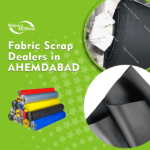Polyester fabric is a popular and versatile textile that has revolutionized the fashion and textile industry. With its unique properties and wide range of applications, the polyester fabric offers comfort, durability, and style. In this article, we will explore the features of polyester fabric, its various uses, and the benefits it brings to different industries. Whether you are a fashion enthusiast or someone interested in textiles, this article will provide valuable insights into the world of polyester fabrics.
- What is Polyester Fabric?
- Composition of Polyester Fabric
- Polyester Stretch Fabric: Comfort and Flexibility Combined
- The Wide Range of Uses for Polyester Fabric
- Polyester Spandex Fabric: The Perfect Blend of Stretch and Resilience
- Benefits of Polyester Fabric
- Polyester Fabrics in Sports and Active Wear
- Caring for Polyester Fabrics: Maintenance Tips and Tricks
- FAQs
What is Polyester Fabric?
Polyester fabrics is a synthetic material made from polymer fibers derived from petroleum-based substances. It was first introduced in the early 1940s and quickly gained popularity due to its durability and ease of production. Polyester fabrics is known for its resistance to stretching, shrinking, and wrinkles, making it an ideal choice for various applications. Its versatility and affordability have made it one of the most widely used fabrics in the world.
Composition of Polyester Fabric
Polyester fabrics is composed of long-chain polymer fibers, specifically polyethylene terephthalate (PET). These fibers are formed through a chemical process called polymerization, where the individual molecules are joined together to create a continuous chain. The resulting fabric is lightweight, strong, and resistant to abrasion.

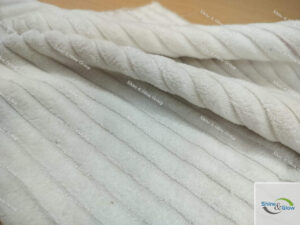
Polyester Stretch Fabric: Comfort and Flexibility Combined
Polyester stretch fabric is a variant of polyester fabrics that offers enhanced flexibility and comfort. It is engineered with the addition of spandex or elastane fibers, which provide stretchability and shape retention. This type of fabric is widely used in sportswear, activewear, and garments that require a greater range of motion.
The Wide Range of Uses for Polyester Fabric
Polyester fabrics finds applications in various industries and sectors due to its exceptional properties. Some common uses of polyester fabrics include:
- Apparel and fashion: Polyester fabrics is extensively used in clothing, including shirts, dresses, pants, skirts, and jackets. It offers excellent color retention, drape, and resistance to wrinkles, making it a preferred choice for both casual and formal wear.
- Home furnishings: Polyester fabrics is used in curtains, upholstery, bed sheets, pillow covers, and other home decor items. Its durability and resistance to fading make it a practical choice for everyday use.
- Industrial applications: Polyester fabrics is employed in industrial settings for the manufacturing of conveyor belts, geotextiles, filter fabrics, and more. Its strength and resistance to chemicals make it suitable for demanding environments.
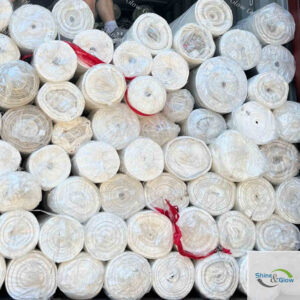
Polyester Spandex Fabric: The Perfect Blend of Stretch and Resilience
Polyester spandex fabric, also known as poly-spandex, is a combination of polyester and spandex fibers. This fabric offers a balanced blend of stretch and resilience, making it ideal for form-fitting garments and athletic wear. Polyester spandex fabric provides excellent shape retention and allows for unrestricted movement.
Polyester Fabric Type
| Polyester Fabric Type | Description |
|---|---|
| Polyester Satin | Smooth and shiny fabric with a glossy finish. Often used for evening gowns and luxurious apparel. |
| Polyester Chiffon | Lightweight and sheer fabric with a slightly rough texture. Commonly used for dresses, scarves, and curtains. |
| Polyester Velvet | Soft and plush fabric with a dense pile. Often used for upholstery, drapes, and clothing with a luxurious touch. |
| Polyester Crepe | Crinkled fabric with a textured surface. Suitable for dresses, blouses, and flowy garments. |
| Polyester Taffeta | Crisp and smooth fabric with a subtle sheen. Frequently used for formal wear, linings, and decorative purposes. |
| Polyester Twill | Strong and durable fabric with diagonal lines on the surface. Commonly used for pants, suits, and sportswear. |
| Polyester Organza | Lightweight and transparent fabric with a crisp texture. Often used for bridal wear, decorations, and overlays. |
| Polyester Fleece | Soft and insulating fabric with a napped surface. Popular for making jackets, blankets, and winter clothing. |
| Polyester Jersey | Stretchy and comfortable fabric with a smooth texture. Widely used for t-shirts, activewear, and casual garments. |
| Polyester Microfiber | Ultra-fine and lightweight fabric with excellent moisture-wicking properties. Often used for athletic wear, towels, and cleaning cloths. |
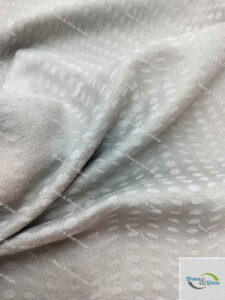
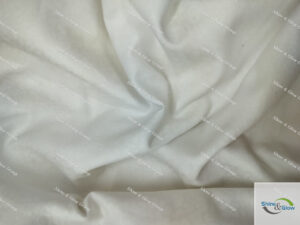
Benefits of Polyester Fabric
Polyester fabrics offers several advantages that contribute to its popularity:
- Durability: Polyester fabrics is highly resistant to wear and tear, ensuring longevity and value for money.
- Easy care: Polyester fabrics is easy to clean and maintain. It is machine washable and dries quickly, reducing the need for extensive care routines.
- Colorfastness: Polyester fabrics retains its color vibrancy even after repeated washes, making it ideal for vibrant and long-lasting designs.
- Wrinkle resistance: Polyester fabrics resists wrinkles and creases, keeping garments looking neat and well-maintained.
- Polyester Fabrics in Fashion and Clothing Industry
The fashion and clothing industry extensively utilizes polyester fabrics due to its versatility and affordability. It is a preferred choice for many fashion designers and manufacturers, offering a wide range of colors, textures, and finishes. olyester fabrics ability to hold shape and resist shrinkage makes it suitable for tailored garments and structured designs.
Polyester Fabrics in Sports and Active Wear
Polyester fabrics, particularly polyester stretch fabric and polyester spandex fabric, is highly valued in the sports and active wear industry. Its moisture-wicking properties, breathability, and stretchability contribute to enhanced performance and comfort. Athletes and fitness enthusiasts rely on polyester fabrics for its ability to keep them cool and dry during intense physical activities.
Caring for Polyester Fabrics: Maintenance Tips and Tricks
Proper care and maintenance can extend the lifespan of polyester fabrics. Here are some essential tips:
- Machine wash polyester fabrics in cold or warm water using a mild detergent.
- Avoid using bleach or harsh chemicals, as they can weaken the fabric.
- Tumble dry on low heat or hang to dry to prevent excessive shrinkage.
- Iron on low heat if necessary, and avoid direct contact with the fabric to prevent melting or damage.
Read More: Stocklot Products are Scraps of Metal, Fabric, Plastic, Paper, and Other Materials
In the world of manufacturing and retail, stocklot products, also referred to as overstocks or stocklots, play a crucial role. These surplus or excess inventories must be cleared out by manufacturers or retailers to make room for new merchandise. Read More…
FAQs
Polyester fabrics can be dyed at home using certain types of dyes specifically designed for synthetic fibers. It is important to follow the instructions provided by the dye manufacturer for best results.
Polyester fabrics is suitable for outdoor use due to its resistance to mildew, UV rays, and weather conditions. It is often used in the production of bags, tents, and flags.
Polyester fabrics is different from other fabrics due to its synthetic nature and unique properties. It offers durability, wrinkle resistance, and color retention, making it suitable for various applications.
Polyester fabrics is a synthetic textile made from polymer fibers derived from petroleum. It is known for its strength, resilience, and resistance to wrinkles, shrinking, and fading.
To remove wrinkles from polyester fabrics, you can try steaming or ironing it on low heat. Alternatively, hanging the garment in a steamy bathroom can help release the wrinkles naturally.



